William Strutt RBA, FZS is an English artist who came from a family of the artist. He was born on 3 July 1825 in Teignmouth, Devon, England.

Joseph Strutt was his grandfather who was a very famous author as well as a well-known artist.
Table of Contents
William Thomas Strutt
William Thomas Strutt who was the father of William Strutt was a good miniature painter. His life was well spent as a student in Paris, France, and England.
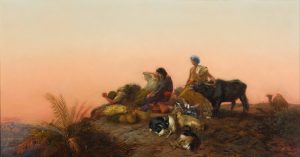
She studied there figurative and history painting. Due to the near breakdown as well as problems with his eyes, he decided to visit Australia. He then arrived on the Culloden on 5 July 1850 where he was married.
Early Life of William Strutt
Strutt found employment in Melbourne as an illustrator on the short-lived Illustrated ‘Australian Magazine’ whose publisher was Thomas Ham. For this project, there was a need of the person who could help in figurative and history paintings for which Strutt was trained already.
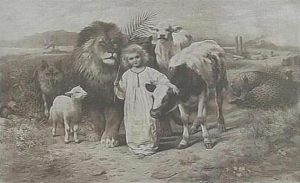
Well, some of his designs also made it to commissions such as a design for a new postage stamp, and an Anti-Transportation League card.
William Strutt Artist Biography
Even though Strutt had no interest in major history paintings in Melbourne but he continued to sketch suitable subjects which included the ‘Black Thursday’ bushfires, which swept over the colony on 6 February 1851.
It was because of these sketches that after 10 years, Strutt was able to compose one of his most notable paintings some ‘Black Thursday’, 6 February 1851. This composition showed and depicted animals and men fleeing from the fire.
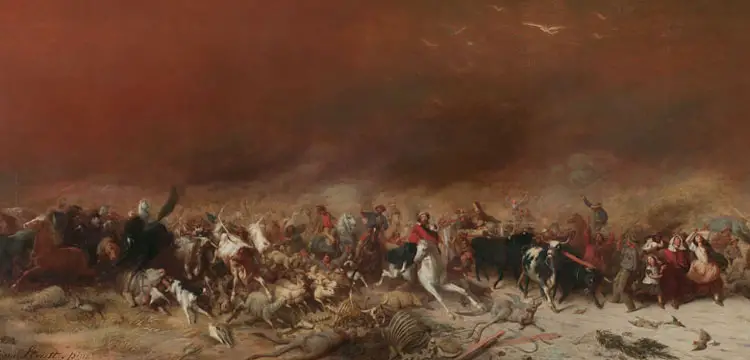
After this composition, Strutt joined the growing tide of men traveling to the gold-fields surrounding Ballarat, Victoria in February 1852. Even though he worked for around eight months in the gold fields but there he found very little success.
During mid-1853, he then returned to Melbourne and there he became actively involved in the cultural scene of the city, undertaking a number of portrait commissions. Afterward, he joined the Victorian Society of Fine Arts as a founding member.
Victorian Exploring Expedition Led
During 1860 and 1861, he got interested in depicting the notable events of the colony which were put out by the events surrounding the Victorian Exploring Expedition led by Burke and Wills.
At Royal Park, Melbourne, he made various studies of their preparations and followed the expedition to its first camp at Essendon, Victoria.
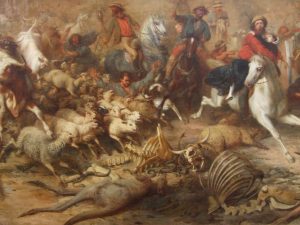
Not only this, but he also collected first-hand accounts from the rescue party and from John King who was the sole survivor of an expedition, upon his return.
In 1862, Strutt left the colony of Victoria. He was a highly religious man and thus he brought up his children in what he perceived to be a godless society.
William Strutt Life
When he returned to England, he completed two major works based on Australian sketches, Black Thursday, 6 February 1851 and Bushrangers, Victoria, Australia, 1852.
Then, he wanted to produce major oil paintings and thus he continued drawing on his Australian sketches. His major oil paintings include ‘The Burial of Burke’.
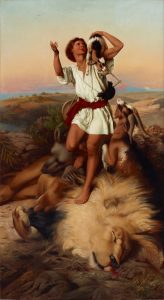
He also painted imagined scenes in 1861 from the First Taranaki War-based on sketches that he made during 1855 and 1856 when he spent his time in New Zealand.
William Strutt Peace Painting
“Peace” is a painting of 1896 by William Strutt. This painting shows the lion and lamb described in the Bible scriptures Isaiah 11:6-7 and Isaiah 65:25.
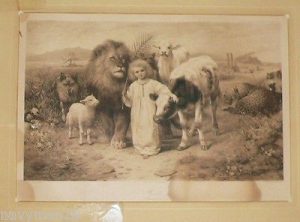
Puppy Love by William Strutt
This painting is made by William Strutt and it is named “Puppy Love’. It is a painting of oil on canvas and its dimensions are 76 x 101 centimeters (29.9 x 39.8 inches).
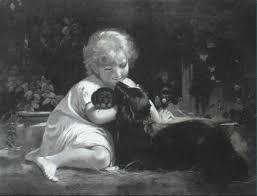
William Strutt’s Famous Paintings
In 2015, Museum of New Zealand Te Papa Tongarewa purchased The painting View of Mt Egmont, Taranaki, New Zealand, taken from New Plymouth, with Maoris driving off settlers’ cattle, from the John Lawford Collection for NZ$1.5 million.
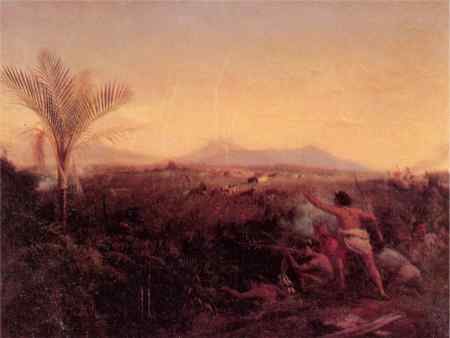
It is the only significant oil painting which is held by New Zealand’s national museum from the 1850s or 1860s. On January 1915, William Strutt died in Wadhurst, Sussex, England.
William Strutt and His Brothers
The engineering skills, as well as the creative talent owned by Willliam Strutt, helped in the development of the Belper and Milford mill sites and the Strutt mill in Derby. He and his brother also contributed to the South Mill in 1812 and the Round Mill in 1813.
